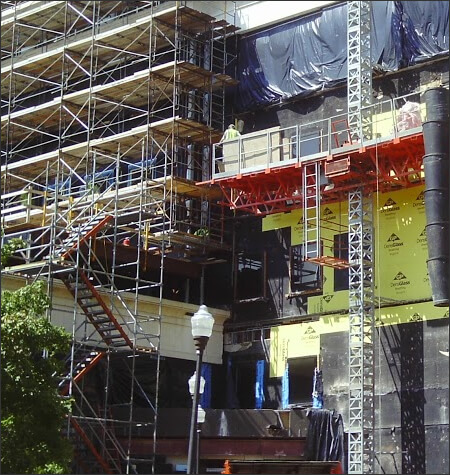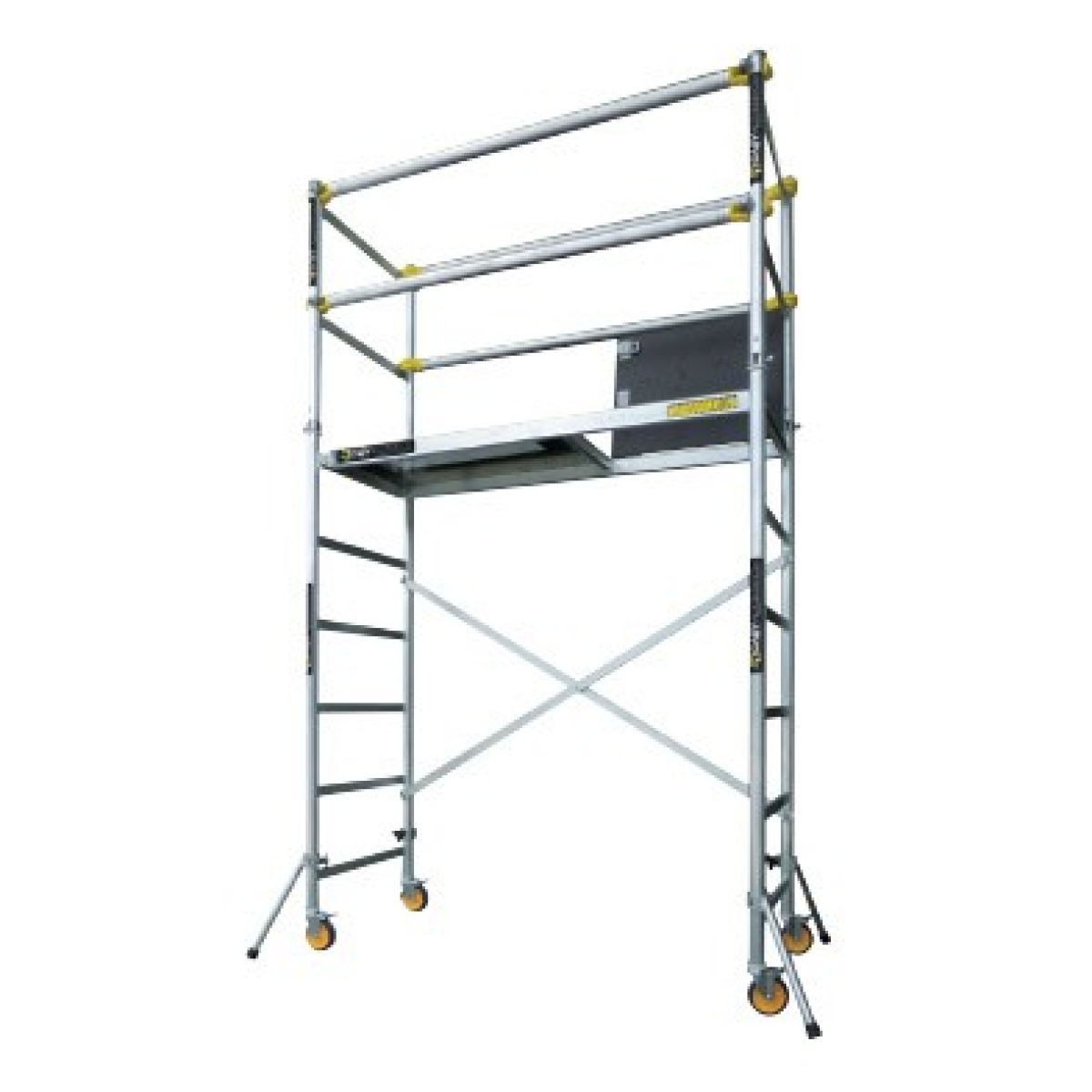The Composition of a Scaffold: Comprehending Its Parts
Rubbish Chutes in Scaffolding: Keeping Construction Sites Clean ===============================================================
Rubbish chutes in scaffolding are important for very easy waste disposal. They assist in maintaining building and construction websites clean by directing debris to marked locations efficiently. Different types like HDPE and galvanized steel offer longevity and easy installation. Correct arrangement and attachment to scaffolding guarantee security. Regular maintenance, assessments, and cleansing timetables are essential for their long life. https://lambethscaffolding.co.uk/index.html Educating on appropriate use and emergency methods boost safety measures. Applying these techniques maintains sanitation, lessens contamination, and promotes sustainability in the building and construction industry. This setup is important for producing a safe and orderly workplace on-site.
Benefits of Rubbish Chutes
Rubbish chutes offer a practical and effective solution for the secure disposal of construction waste from elevated workplace. By utilizing rubbish chutes, construction websites can substantially minimize the ecological impact of their procedures. Crucial waste management is necessary in lessening contamination and advertising sustainability in the building and construction market. Rubbish chutes aid in consisting of and guiding particles to assigned collection points, avoiding littering and prospective harm to the atmosphere.
Furthermore, making use of rubbish chutes results in performance renovations on construction websites. Workers no more need to by hand deliver waste down several flights of stairways or through elevators, saving time and lowering the danger of mishaps. This structured process allows employees to concentrate on their jobs more effectively, increasing general productivity. Additionally, rubbish chutes add to a more secure work environment by decreasing mess and congestion on scaffolding and workplace. Ultimately, the advantages of rubbish chutes extend past convenience, favorably affecting both the setting and the efficiency of building projects.
Types of Trash Chutes
The varied range of waste administration systems made use of in building and construction websites includes specialized channels for the directed disposal of debris from raised workplace. Rubbish chutes, a vital component in maintaining sanitation and safety and security on building and construction sites, been available in various kinds based upon chute products and dimension options.
Chute products frequently utilized in rubbish chutes include long lasting products such as high-density polyethylene (HDPE) and galvanized steel. HDPE chutes are lightweight, corrosion-resistant, and very easy to mount, making them a prominent choice for short-term building and construction sites. On the other hand, galvanized steel chutes use increased resilience and appropriate for lasting projects or websites with hefty debris.
When it pertains to dimension choices, rubbish chutes are available in numerous diameters to suit various kinds and quantities of waste. Common size choices array from 20 inches to 32 inches in size, enabling the reliable disposal of particles such as concrete, wood, and various other building products. scaffolding erection Choosing the appropriate chute product and size is essential in making certain the effective monitoring of waste on construction sites.
Setup Considerations
During the setup of rubbish chutes in scaffolding, thorough focus to structural integrity and proper placement is vital. Installment difficulties usually emerge because of the differing elevations and setups of building and construction sites. It is important to verify that the chutes are firmly attached to the scaffolding to stop accidents and preserve safety and security requirements.


Furthermore, taking into consideration the ecological effect is vital. Proper installation can assist protect against particles from dropping outside the chute, decreasing the risk of contamination and advertising a cleaner worksite.
Ecological effect considerations include the materials made use of in the chutes. Opting for environmentally friendly and sturdy materials can minimize the job's carbon impact. It is also vital to safeguard the chutes securely to avoid any loose components from ending up being environmental threats.
Upkeep Tips
Appropriate upkeep of rubbish chutes in scaffolding is crucial for ensuring their durability and proceeded performance. To maintain the performance of rubbish chutes, carrying out safety nets is crucial.
Routine evaluations should be performed to determine any indications of damage, such as fractures or damages, which might bring about possible clogs or safety hazards. In addition, developing a routine cleansing routine is extremely important in keeping the chutes. Cleansing methods involve getting rid of any kind of particles or blockages that might restrain the flow of rubbish down the chute. This can be done using brushes, water, or atmospheric pressure to remove and remove built up waste.
In addition, lubricating relocating components, such as joints and locks, will aid protect against deterioration and guarantee smooth procedure. It is suggested to utilize ideal lubes that are compatible with the materials of the chute.
Precaution
Preserving a concentrate on precaution in relation to rubbish chutes in scaffolding is essential for ensuring a hazard-free building and construction atmosphere. When it pertains to utilizing rubbish chutes on building websites, focusing on safety and security not only secures the workers yet also improves overall project efficiency.
To accomplish this, think about the following essential precaution:
- Routine Examinations: Conduct regular checks to make sure the chutes are secure and devoid of damages.
- Appropriate Training: Offer comprehensive training to all employees on the right usage of rubbish chutes to avoid crashes.
- Emergency Treatments: Establish clear procedures for dealing with emergencies or accidents including the rubbish chutes.
- Threat Avoidance: Apply measures to minimize possible dangers, such as debris dropping outside the chute or obstructions that might create crashes.
Frequently Asked Concerns
Can Trash Chutes Be Used for Hazardous Materials or Liquids on Construction Sites?
Rubbish chutes are mainly developed for solid garbage disposal on building and construction sites. When it pertains to taking care of dangerous materials or fluids, specialized equipment and methods are necessary to ensure safe and compliant disposal techniques.
Just how Do You Take care of Huge or Bulky Items Using Rubbish Chutes?
When taking care of big or large products utilizing rubbish chutes, explore reusing choices to minimize waste. Verify items are firmly secured before dropping them to prevent accidents. Apply precaution to guard employees and support a clean building site.
Are There Any Weight Limitations for Items Being Thrown Down Trash Chutes?
Weight restrictions have to be purely complied with when making use of rubbish chutes for disposal on construction websites. Safety and security safety measures ought to be complied with to prevent overwhelming the chutes, making certain a secure workplace for all employees included.
Can Rubbish Chutes Be Customized for Particular Task Needs or Website Layouts?
Modification alternatives for rubbish chutes can accommodate details project demands and site layouts. Nevertheless, it is crucial to consider website restrictions such as space limitations and safety and security guidelines when planning for customized chute options in building setups.
How Do You Address Issues Such as Clogging or Clogs in Rubbish Chutes Throughout Building And Construction Projects?
Stopping obstructions in rubbish chutes during building and construction projects is necessary. Regular maintenance pointers such as removing debris, examining for possible obstructions, and ensuring correct setup can help address problems without delay, guaranteeing smooth waste elimination and website sanitation.
Final thought
To sum up, waste chutes in scaffolding play a vital function in maintaining construction websites clean and risk-free. By properly throwing away waste products, these chutes aid maintain a clean work environment and reduce the threat of accidents.
Numerous type of waste chutes are readily available, and proper installment and maintenance are important to guarantee their performance.
Applying precaution is also vital to prevent injuries and maintain a productive building site.